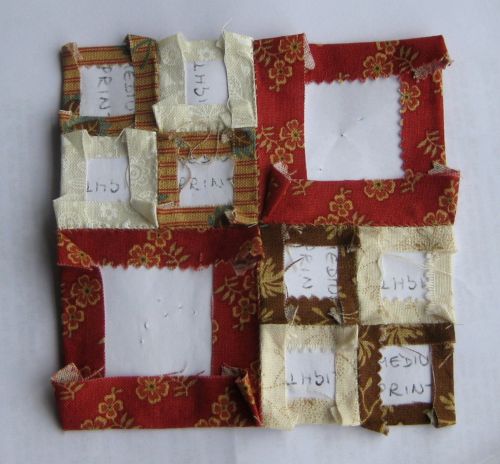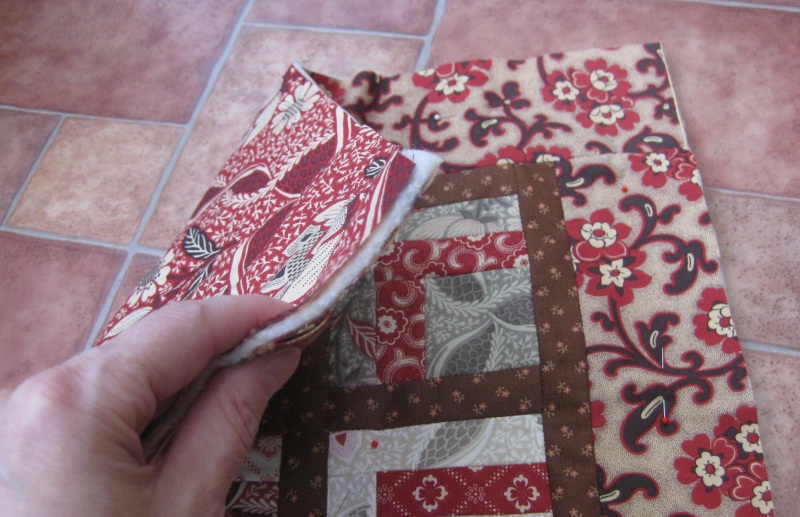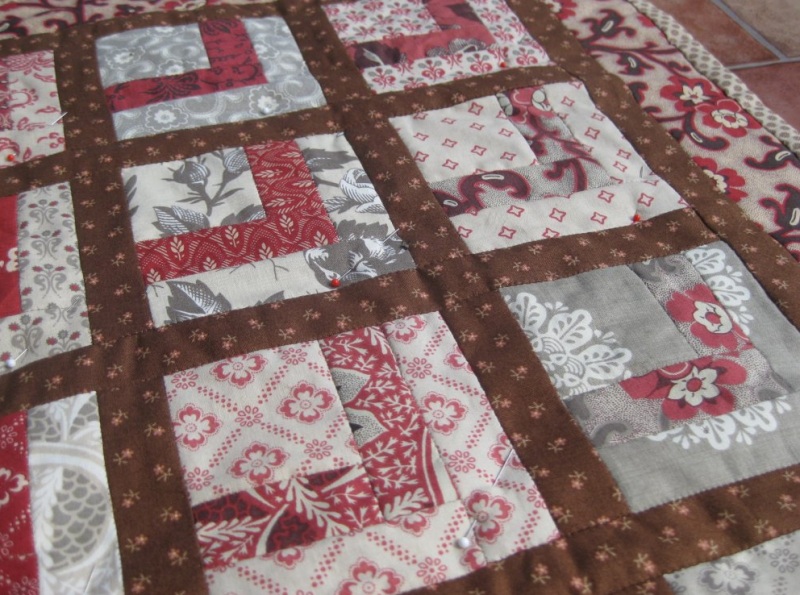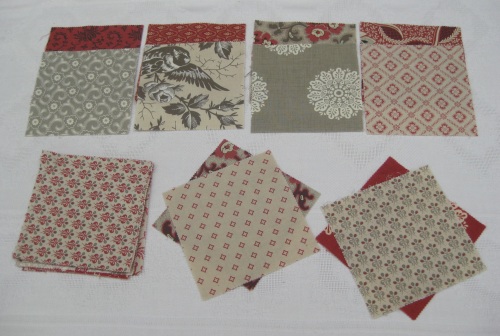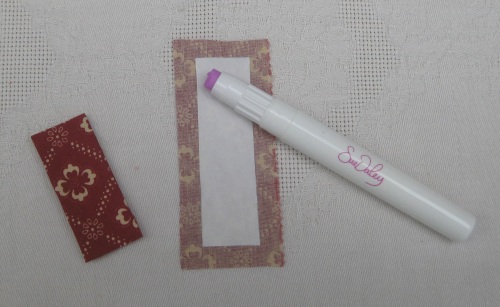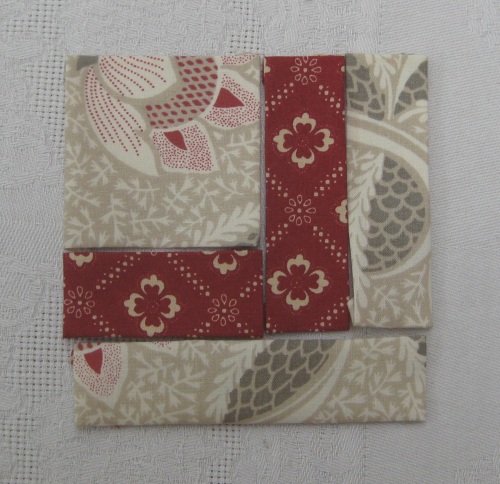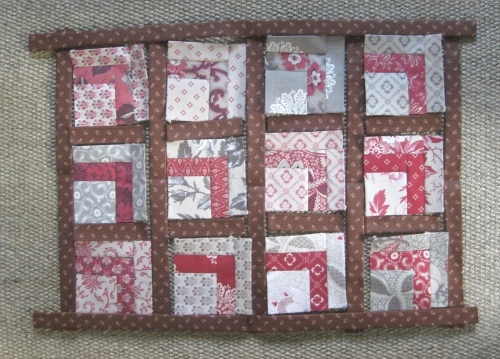I’m making the ‘Foursquare’ mini quilt from Jo Morton’s book Jo’s Little Favorites 2 (the middle one on the cover of her book).
I got a bit carried away with my quilting after my last blog post, and didn’t take pictures till the end – sorry!
I added wide dark brown fabric borders to the central panel of blocks, then removed all the papers from the little squares (I didn’t make a paper pattern for the wide borders). Then I ironed the quilt top, trimmed the edges completely square, then cut one piece of toning fabric for the back, using the top as a pattern. Using the top again as a guide, I cut a piece of thin wadding (a mini quilt only ever needs very thin wadding, or it would be out of scale). I cut it oversized at first, then trimmed it back as necessary, as wadding tends to ‘shift’ a bit as you pin it into position.
I cut two inch wide strips of the mustard colour print fabric, and made binding for the edges, which I hand stitched in place.
For this quilt, I decided to give it a go and do the actual quilting by machine, which I now think was a mistake. It has come out very neatly, but a bit TOO neatly for me! It doesn’t seem to have much character to it now.
I drew two lines in each direction with a water soluble pen on the fabric top, in each direction, to start me off, then the rest of the quilting lines I stitched by eye, once I’d got used to the amount of spacing to leave each time. I’d thought that would give it less of a ‘manufactured look’.
It’s come out nice, but a bit bland, I think! The quilting is well-defined, but too regular for me.
In comparison, here are some other mini quilts that I’ve made previously. This one was a print of quilting squares that I made into a ‘cheater quilt’, as it’s not real patchwork – it’s just printed on! But I did hand quilt it, and it’s come up nice and ‘puffy’ now that it’s been washed.
This design is called Lincoln’s Logs, and it’s the second quilt I ever made. My stitching is quite large on this one, but again it’s got a lot of character, so I like this one:
This one below is my favourite – the first one I ever made. The actual patchwork is pretty awful – you can see the tips of my triangles are cut off by the seamlines, as I stitched this one the ‘proper way’ by machine, and I kept getting my seam allowances wrong! But as far as the quilting goes, this one came out well – the stitches are small, the thread weight works, and the wadding was very thin, so it’s a flexible little quilt.
But machine quilting my mini quilts? Don’t think I’ll be trying that again.
~~~~~~~~~~~~~~~~~~~~~~~~~~~~~~~~~~
















